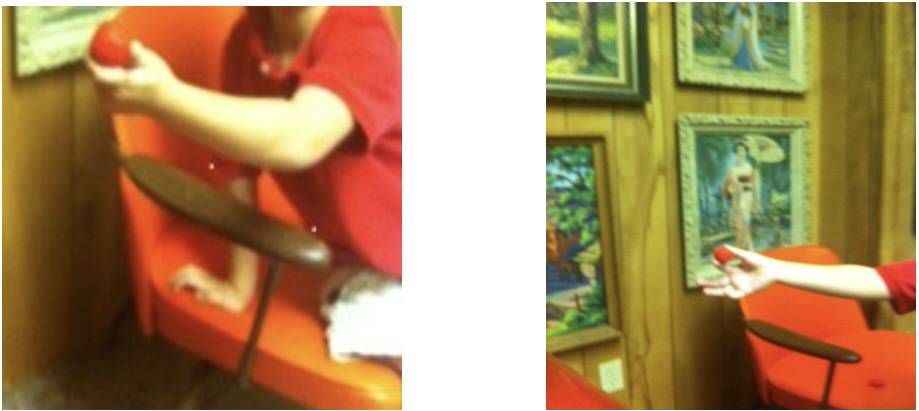When I was deeply entrenched in research, writing, and play therapy practice that incorporated superheroes, I learned about the importance of the origin story — the backstory narrative. It is no different in the context of this article, which is about what I call “postmodern play,” a term I use to describe play-based interventions rooted in Narrative Therapy. As a brief but related aside, I had just finished a book on the use of superheroes in counseling and play therapy when I was contacted by MSNBC to come on air to discuss what they, NOT I, called Superhero Therapy. When I sat excitedly in front of my television that night to watch myself, I noticed a chyron beneath my image that said, “The APA does not endorse Superhero Therapy.” Fifteen minutes of infamy, I guess.
Ironically, I had never used the term, “Superhero Therapy” in my writing, nor did I profess my clinical work with superheroes to be evidence based. And so, it is here! The APA will never endorse postmodern play, nor will it ever attain evidenced-based status. And I aspire to neither.
But, as Irvin Yalom suggested in his Gift of Therapy, nonvalidated therapies are not (necessarily) invalidated therapies. So it has been for me, and postmodern play. In my child therapy work, particularly involving play, I have noticed that positive changes in the child’s world, both inside and outside of the therapy space, could often be explained by some of the core principles of Narrative Therapy, one of the postmodern approaches to therapy — which also includes Brief Solution-Focused Therapy. These core principles included a(n):
- Strength-based orientation rather than one based on deficiency
- Focus on the child as an agent of change
- Externalization of the problem
- Collaborative orientation to treatment that includes parents and teachers
- Author-editor relationship between therapist and child
- Future orientation that draws upon past successes
- Articulation of preferred identity through storying
- Personalization of outcome measures
- Understanding that children have islands of competence
Channeling Trouble Energy in Play Therapy
As an example, I recall 8-year-old Liam, who came with his parents for help with “his” problems of stealing food, his mother’s jewelry, and temper tantrums — exclusively at home when he was confronted with his misdeeds. Born in Asia, Liam was adopted in early infancy and seemed to be progressing nicely through his developmental journey. But something was happening that was giving rise to this relatively new spate of behavioral problems. During the intake, the parents and I wondered together if the racial/cultural difference between him and his parents was contributing to an emergent and distressing sense of “otherness” — they rarely, if ever, discussed the adoption, Liam’s origin story. We wondered if he was trying to process the loss inherent in the adoptive process, stealing as a way of filling a gap. We wondered if the marital tension between them was creating a bed of unrest and insecurity for Liam. We wondered!When Liam came to my office the following week, I was met by a very poised, articulate, and interesting child whose vigorously shaking leg suggested that deeper currents of emotions ran just below the surface of this very seemingly contained boy. Drawn in by that current, I wondered aloud about the “energy” in his leg, and asked in what other parts of his body does he sometimes feel such energy. He played right along and said how sometimes that energy goes to his stomach, and sometimes arms, and together, we called it “body energy.” We explored this body energy when it started and whether he liked it, whether it got in the way sometimes and what he typically did with it once it appeared.
From there we launched into a conversation of other possible types of energy that he had, and as I asked him to describe some of his interests, which included history and origami, I asked him if he could label that energy, to which he responded, “art energy and learning energy.” A bit later in the conversation, when our conversation turned to the concerns his parents had around his stealing and angry outbursts, he quite spontaneously came up with the notion of “trouble energy.” I asked him to pick a colored piece of Play-Doh and show me how big trouble energy could be in his life, and he offered an apple-sized ball of Play-Doh in his little hands. That was the sum total of our intake and treatment plan.
The clinical work in the following weeks consisted of:
- Play therapy with Liam using the sandtray to act out play out scenes of family separations and reunions
- Playful conversations about trouble energy in his life, and what he wanted to do with it and its influence
- Liam sharing his vast knowledge of world history and “trying” to teach me origami
- Discussing simple behavioral methods for the parents to use when Liam expressed anger and took things
- Collaboration with his teacher around additional sensitivity to his needs, and
- Occasional family drawing time during which Liam and his parents expressed themselves freely.
- Referral of Liam’s parents to a marital counselor which they happily agreed to.

***
My work with Liam and his family was complete, satisfactory to all involved. His tantrums subsided, the family re-visited and openly discussed the story of his adoption, and his feelings about it, and the stealing ended. I trust that my description of the work adequately captures the core principles and methods of what I call postmodern play therapy. Chyrons not withstanding!
Questions for Reflection and Discussion
What are your impressions of this author’s work with Liam?
In what ways have you found narrative therapy to be helpful?
What about this approach do you find interesting? Helpful?
File under: The Art of Psychotherapy, Child & Adolescent Therapy






